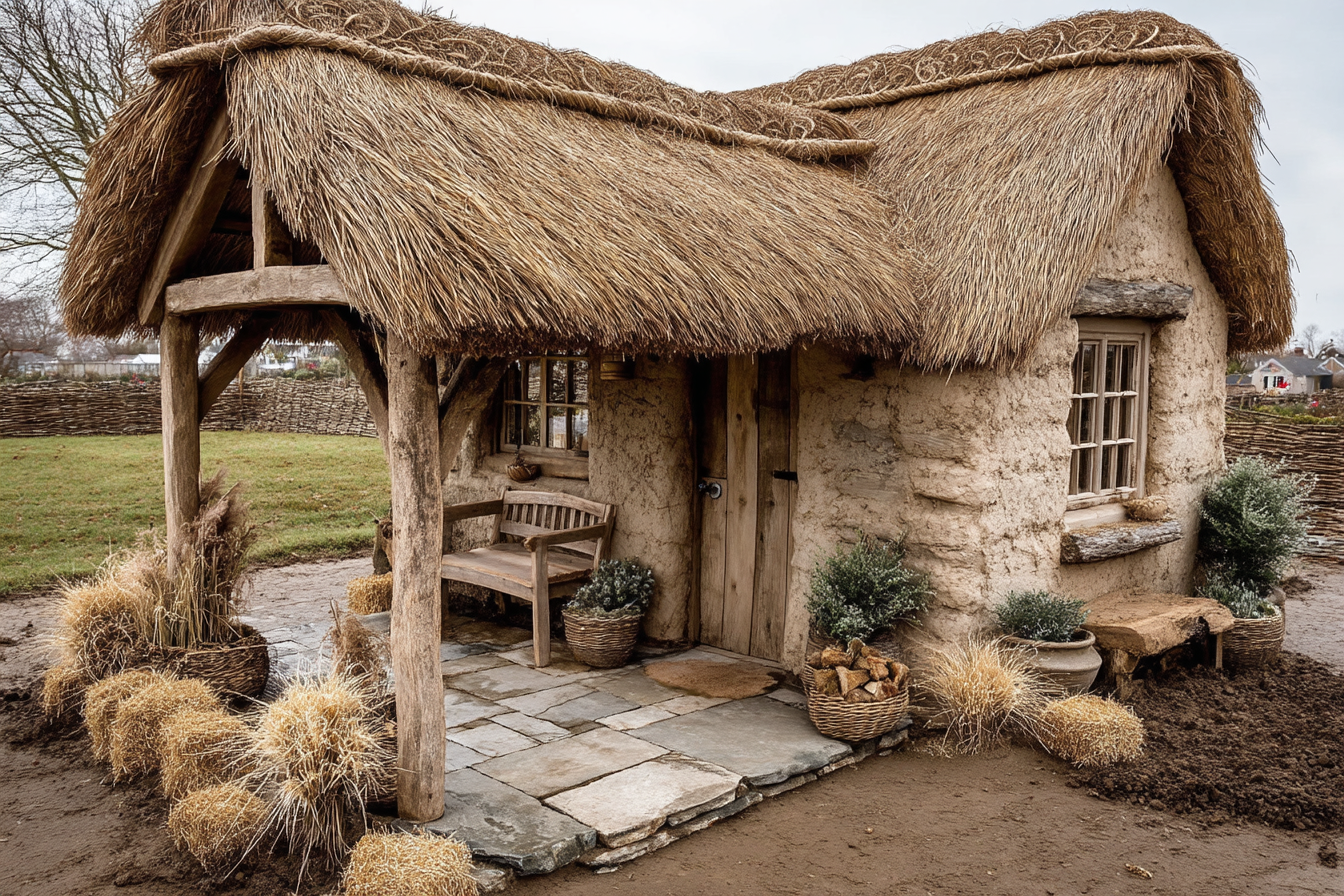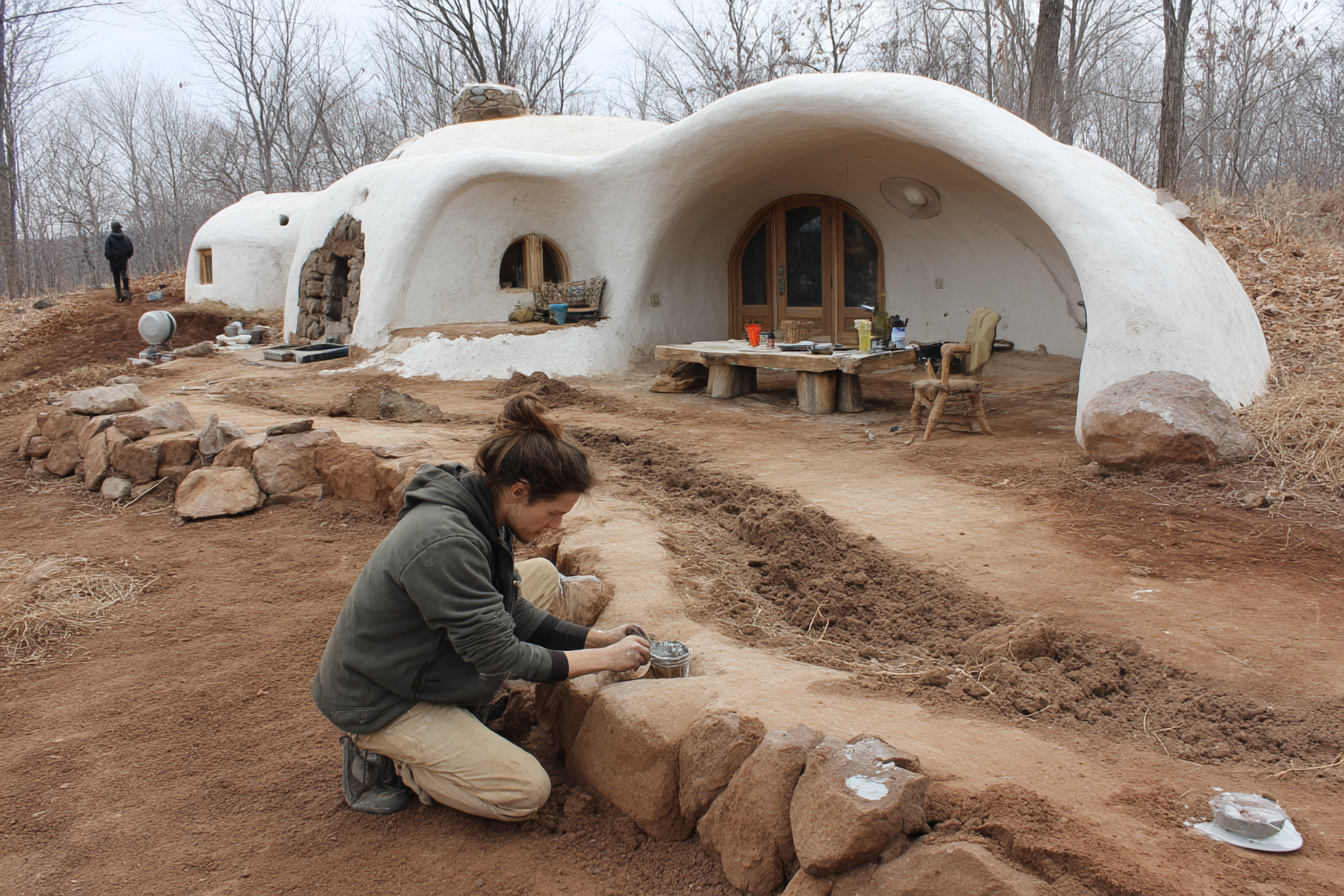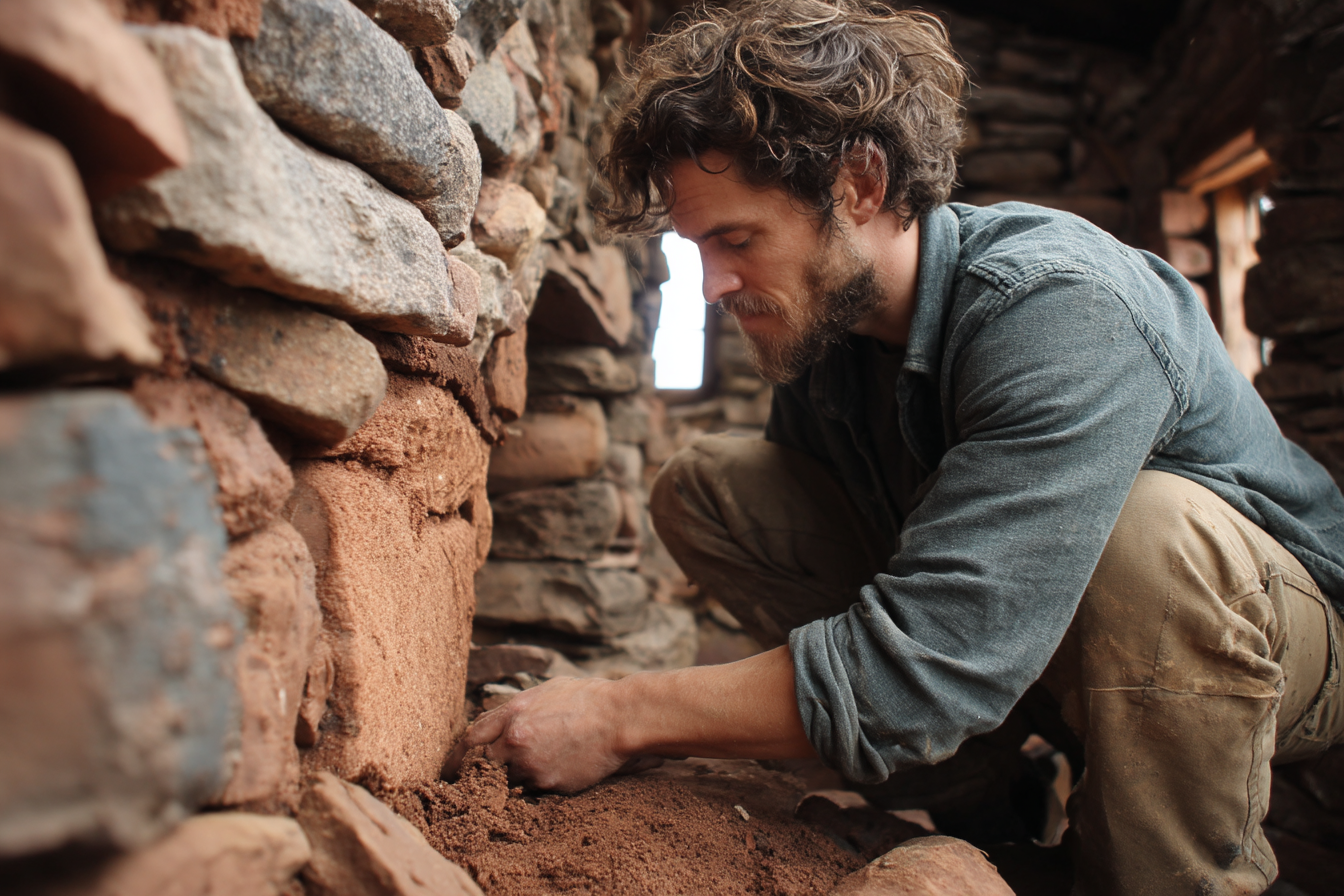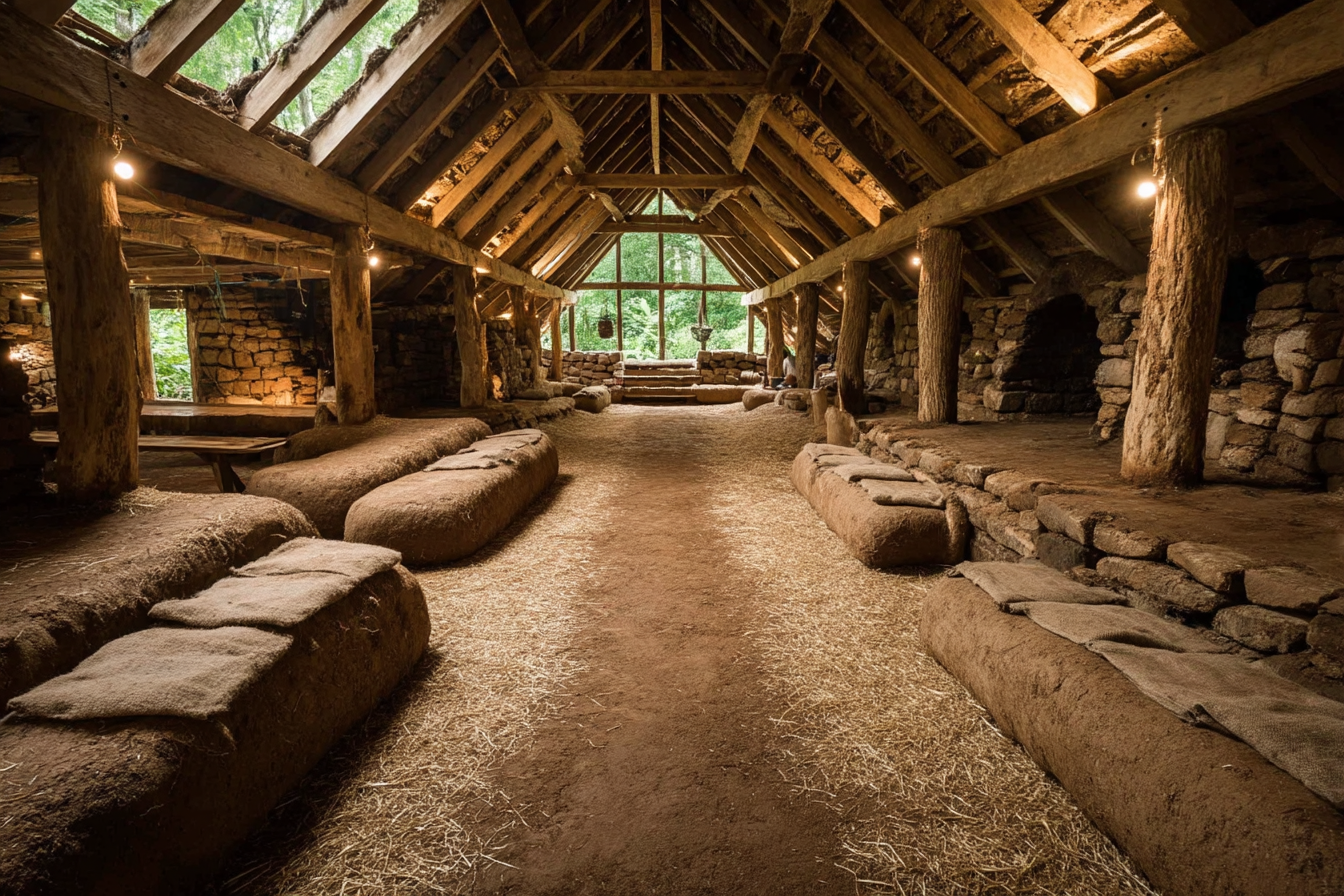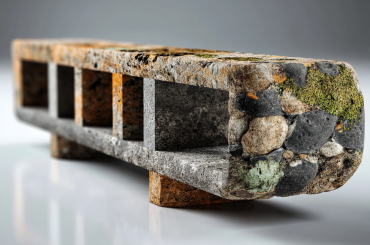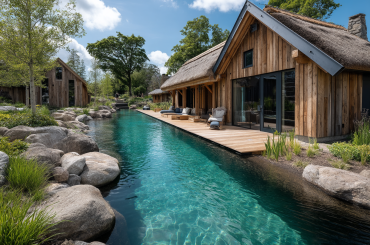I was up to my elbows in mud when I had my first proper revelation about natural building. This wasn’t garden mud or even the carefully mixed compost that usually coats my fingernails. This was building-grade cob—that magical mixture of clay, sand, and straw that people have used to construct homes for literally thousands of years. My friend Marko, a natural builder with forearms like tree trunks, was teaching a weekend workshop at a small eco-community outside Bristol. He’d just handed me a lump of the stuff and told me to feel its weight, its potential.
“This,” he said with the reverence usually reserved for fine wine or vintage cars, “has built more homes throughout human history than concrete ever will.”
I squished it between my fingers, feeling the sand grains and straw fibers catch against my skin. It reminded me of making mud pies as a kid, that same tactile pleasure, but with purpose now. I remember thinking, “I’m holding actual house in my hands.” Not components that will become house—this humble mixture was already house in its rawest form. Just add time, skill, and a bit of creativity. That simplicity knocked me sideways.
I’d spent years writing about green building methods, interviewing architects about innovative materials and visiting showcases of eco-friendly design. But standing there with clay oozing between my fingers drove home what I’d been missing—the profound directness of natural building. The way it connects you to materials that are literally beneath your feet, requiring minimal processing and creating almost no waste. How had I become so accustomed to thinking of buildings as products of factories and global supply chains when the earth itself offers such perfect building materials?
Not that I’m suggesting we all immediately tear down our existing homes and start slapping up cob cottages (though some days, when I’m feeling particularly frustrated with modern construction waste, the idea doesn’t seem completely bonkers). What I’ve become fascinated with—obsessed with, if you ask my partner Sam—is how these ancient techniques can be incorporated into contemporary design.
Take my neighbors Tom and Liesel, who renovated their Victorian terrace last year. When they knocked through the wall between their kitchen and dining room, they needed a new supporting structure. Instead of the standard steel beam, they opted for a massive reclaimed timber frame. It’s this gorgeous, characterful piece of oak that’s now the centerpiece of their ground floor. Every knot and weathered patch tells a story, and it required about 1/20th of the carbon emissions that a new steel beam would have generated. The builder charged them extra for installation (grumbling the entire time about how much easier steel would have been), but the results speak for themselves. “It’s weird,” Liesel told me over garden-fence coffee last week, “that post makes the whole house feel more solid, more real somehow.”
That’s exactly it—there’s an authenticity to natural materials that manufactured ones just can’t match. They have variation, character, imperfection. They age and patina in ways that synthetic materials try desperately to mimic.
I had a similar epiphany about straw bale construction when I visited a self-built home in rural Somerset. From the road, you’d never guess the walls were essentially agricultural waste products stacked like giant building blocks. Inside, though, the thick walls created these incredible deep window seats and a sense of shelter that felt almost primordial. The owner, Christine, a former accountant turned amateur builder, showed me around with infectious enthusiasm.
“Feel the walls,” she insisted. I pressed my palm against the lime-plastered surface, expecting something like normal drywall but finding instead a slight give, a warmth, and a breathability that’s completely unlike conventional construction. “The house breathes,” Christine explained. “It regulates humidity naturally. We haven’t had a speck of mold since we moved in.” In damp Britain, that’s practically miraculous.
The cost comparison was eye-opening too. Christine and her husband spent roughly the same as a conventional build would have cost, but ended up with insulation values about three times higher than building regulations require. Their heating bills are minuscule, even in winter. “The payback period isn’t some distant future date,” she laughed. “It started the first month we lived here.”
Of course, there are challenges. Planning permissions can be a nightmare when you’re proposing something outside conventional construction methods. Insurance companies look at you like you’ve suggested building with marshmallows. And finding skilled craftspeople who understand these techniques often means paying premium rates or—in many cases—learning to do things yourself.
I learned this firsthand when I helped my friend Diane install a rammed earth feature wall in her eco-renovation. We spent a full weekend mixing soil, clay, and a tiny bit of cement stabilizer, then compacting it in layers between simple wooden forms. The physical work was intense—I couldn’t lift my arms properly for days afterward—but watching that wall emerge was genuinely magical. Each layer compressed down to reveal subtle color variations in the soil, creating this gentle striped effect that no paint could ever replicate.
“Wouldn’t it have been easier to just use brick?” Diane’s partner asked more than once during the process. Easier, yes. But the completed wall is essentially zero carbon, completely non-toxic, and provides excellent thermal mass that moderates temperature swings in their south-facing living room. Three years later, it’s still the first thing visitors comment on when they enter the house.
What I find most exciting is seeing architects and designers who are finding ways to incorporate these methods at scale. I interviewed Lin Samuelson last year, an architect whose firm specializes in hybrid construction that combines natural building elements with conventional techniques. “We’re not purists,” she explained. “We use natural materials where they make most sense—often as infill for timber frame structures, sometimes as feature elements, sometimes as entire wall systems.”
Her approach is pragmatic rather than ideological. They might use conventional foundations but top them with strawbale walls, or combine standard trussed rafters with a living roof system. One of their recent projects used rammed earth walls for the south side of the building to provide thermal mass, with highly insulated conventional walls on the north side.
“The construction industry produces something like 40% of global carbon emissions,” Lin told me. “We can’t afford to be precious about doing things 100% naturally or not at all. Every conventional material we replace with a natural alternative is a win.”
I think about that conversation often when I’m faced with the perfectionism that can sometimes plague environmental movements. The “all or nothing” mentality that paralyzes progress because we can’t achieve the ideal. Lin’s hybrid approach feels much more practical for most people in most situations.
Even small integrations of natural materials can transform how a space feels. My bathroom renovation last year included a section of tadelakt—a traditional Moroccan lime plaster technique that creates waterproof surfaces without the need for tiles or synthetic sealants. It was definitely more labor-intensive than slapping up tile (my bathroom was out of commission for nearly a week while the multiple layers cured), but the resulting shower area has this luminous quality that changes subtly with the light. It feels somehow both ancient and contemporary, and unlike any bathroom I’ve ever had before.
I’m not suggesting everybody needs to immerse themselves in clay or start stockpiling straw bales in their garden (though if that appeals, please do invite me over for tea—you’re clearly my kind of people). What I’m advocating for is considering how these traditional materials might complement your existing or future building projects. Could that garden wall be dry-stack stone instead of concrete blocks? Could that extension incorporate a living roof? Could your interior walls use clay plasters instead of gypsum and vinyl paint?
The beauty of natural building in the contemporary context is that we can pick and choose—use the best of these time-tested materials while still benefiting from modern design knowledge and conveniences. We’re not talking about returning to some primitive existence; we’re talking about thoughtful integration of materials that have proven themselves over centuries.
Natural building isn’t just about sustainability credentials either—though those are certainly impressive. It’s about creating spaces that feel fundamentally different from the synthetic environments most of us inhabit. There’s a quality to buildings made from minimally processed natural materials that’s difficult to articulate but immediately perceptible. They feel… alive somehow. They respond to their environment, changing subtly with humidity and temperature. They age with dignity rather than deteriorating.
My own home is a fairly typical Victorian mid-terrace—all brick, slate, and timber. Nothing particularly natural or ecological in its original construction. But each renovation project I undertake inches it closer to my ideal. Last year’s kitchen remodel included countertops made from a composite of recycled paper and natural resins. The living room features clay plaster on one wall that helps regulate humidity. The back garden hosts a small studio built primarily from reclaimed timber and straw-clay infill.
It’s these incremental changes that matter. If every building project incorporated even 20% natural materials, the impact would be enormous—not just environmentally, but in how those spaces feel to inhabit.
Next week I’m visiting a project in Wales that’s pushing these ideas even further—a contemporary home built using a traditional timber frame with hempcrete infill walls. The hemp fibers are bound with lime to create solid insulating walls that sequester carbon for the life of the building. The architect describes it as “carbon negative construction,” and I’m itching to see how it’s performed after two years of occupation.
I’ll take lots of photos, ask far too many questions, and probably come home with renewed enthusiasm for yet another natural building technique that Sam will gently remind me we cannot immediately implement in our terraced house. But that’s how change happens, isn’t it? We get excited, we experiment, we incorporate what works, we share our experiences.
So if you spot someone at your local building supply store staring thoughtfully at bags of lime while muttering about breathability and carbon sequestration, come say hello. It might well be me, plotting my next small step toward making my very conventional home a little bit less so. And if you’ve got your own natural building experiments to share, well, I’ve got a flask of tea and all the time in the world to swap stories. This is how we build change—one wall, one project, one mud-covered revelation at a time.
